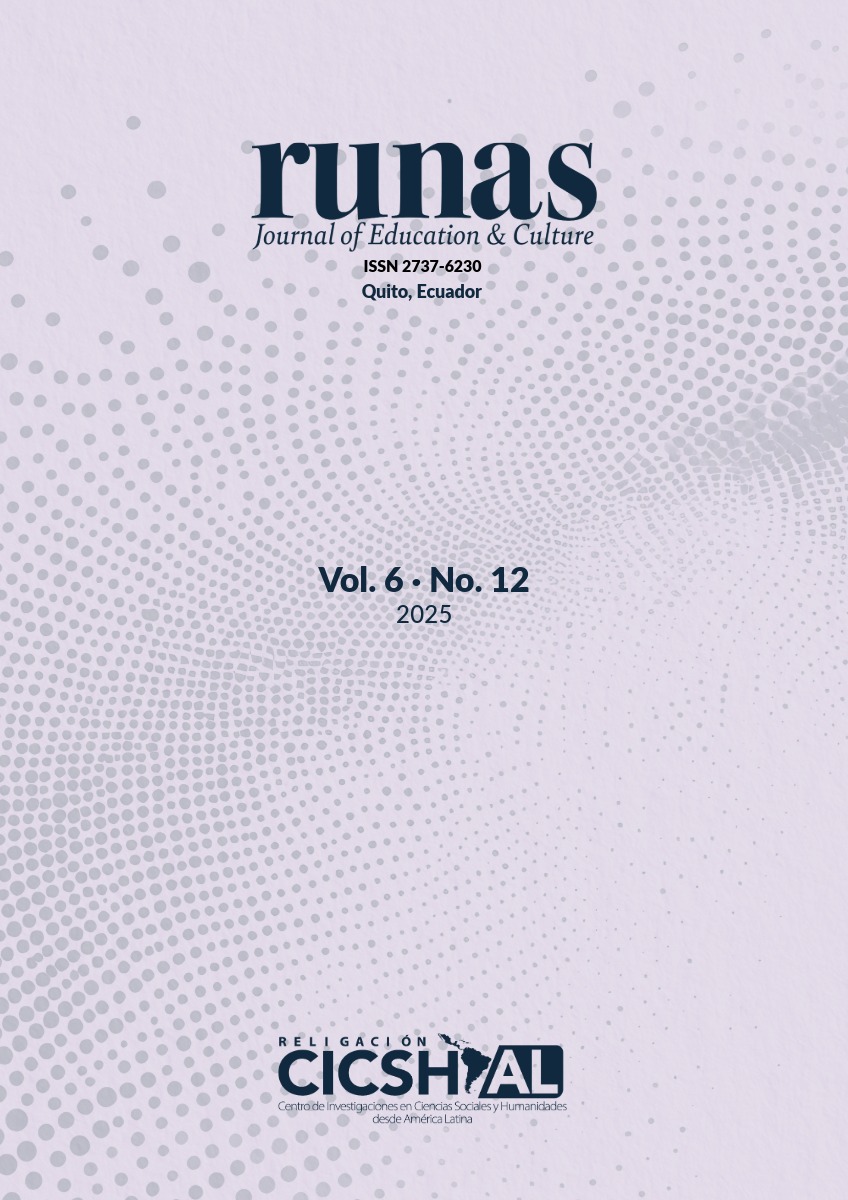Abstract
Education has undergone a significant transformation, particularly after the COVID-19 pandemic in March 2020, which accelerated the integration of technology in the teaching-learning process. In this context, digital platforms have become essential tools for developing grammatical competences. This study adopts a qualitative, socio-educational approach, incorporating descriptive-explanatory analysis and extensive bibliographic review, complemented by surveys administered to 125 students and 9 instructors from the Instituto Superior Tecnológico Tungurahua. It examines the potential of digital tools to enhance the teaching of grammar. However, several challenges remain, including the need for adequate teacher training, equitable access to technological resources, and the development of effective evaluation strategies. The research draws upon academic databases such as Google Scholar, Scielo, and Dialnet to provide a comprehensive perspective. Ultimately, the study underscores the potential of digital platforms as valuable resources in English language instruction while highlighting the importance of addressing implementation challenges to ensure inclusive and effective learning experiences.
References
Alakrash, H. M., Razak, N. A., & Krish, P. (2022). The Application of Digital Platforms in Learning English Language. International Journal of Information and Education Technology, 12(9), 899-904. https://doi.org/10.18178/ijiet.2022.12.9.1699
Anshari, M., Almunawar, M. N., Shahrill, M., Wicaksono, D. K., & Huda, M. (2017). Smartphones usage in the classrooms: Learning aid or interference? Education and Information Technologies, 22(6), 3063-3079. https://doi.org/10.1007/s10639-017-9572-7
Díaz-Delgado, N. (2018). Gamificar y transformar la escuela. Revista Mediterránea de Comunicación, 9. https://doi.org/10.14198/MEDCOM2018.9.2.24
Donaldson, R. P., & Haggstrom, M. A. (2006). Changing language education through CALL. Routledge.
Garcia, A., & Nichols, T. P. (2021). Digital platforms aren’t mere tools—They’re complex environments. Phi Delta Kappan, 102(6), 14-19. https://doi.org/10.1177/0031721721998148
Langan, D., Schott, N., Wykes, T., Szeto, J., Kolpin, S., Lopez, C., & Smith, N. (2016). Students’ use of personal technologies in the university classroom: Analysing the perceptions of the digital generation. Technology, Pedagogy and Education, 25(1), 101-117. https://doi.org/10.1080/1475939X.2015.1120684
Maqbool, S., Ismail, S. A. M. M., & Maqbool, S. (2020). Language Learning Strategies for Gen Z ESL Learners as Digital Natives. Universal Journal of Educational Research, 8(8), 3439-3448. https://doi.org/10.13189/ujer.2020.080818
Me, E. (2021). Factors influencing EFL students’ motivation in online learning: A qualitative case study. Journal of Educational Technology and Online Learning, 4(1). http://doi.org/10.31681/ jetol.817680
Naci Çoklar, A., & Tatli, A. (2021). Examining the Digital Nativity Levels of Digital Generations: From Generation X to Generation Z. Shanlax International Journal of Education, 9(4), 433-434. https://doi.org/10.34293/education.v9i4.4224
Novikova, Y. (2020). Using Liveworksheets To Diversify Language Lessons. Boletín de la Universidad Nacional de Automóviles y Carreteras de Járkov, 91, 221-225. https://doi.org/10.30977/BUL.2219-5548.2020.91.0.221
Pitoyo, M. D., Sumardi, S., & Asib, A. (2020). Gamification-Based Assessment: The Washback Effect of Quizizz on Students’ Learning in Higher Education. International Journal of Language Education, 4(2). https://doi.org/10.26858/ijole.v4i2.8188
Rodríguez-Fernández, L. (2017). Smartphones y aprendizaje: El uso de Kahoot en el aula universitaria. Revista Mediterránea de Comunicación, 8(1), 181. https://doi.org/10.14198/MEDCOM2017.8.1.13
Rojas-Viteri, J., Álvarez-Zurita, A., & Bracero-Huertas, D. (2021). Uso de Kahoot como elemento motivador en el proceso enseñanza-aprendizaje. Cátedra, 4(1). https://doi.org/10.29166/catedra.v4i1.2815
Ryan, R. M., & Deci, E. L. (2020). Intrinsic and extrinsic motivation from a self-determination theory perspective: Definitions, theory, practices, and future directions. Contemporary Educational Psychology, 61. https://doi.org/10.1016/j.cedpsych.2020.101860
Soto, M. J. T., & Larenas, C. H. D. (2021). Quizizz Y Smartphones: Estrategia De Calentamiento Para Mejorar La Participación En Clases De Los Estudiantes Universitarios. Chakiñan, Revista de Ciencias Sociales y Humanidades, 13, 31-41. https://doi.org/10.37135/chk.002.13.01
Sung, Y.-T., Chang, K.-E., & Liu, T.-C. (2016). The effects of integrating mobile devices with teaching and learning on students’ learning performance: A meta-analysis and research synthesis. Computers & Education, 94, 252-275. https://doi.org/10.1016/j.compedu.2015.11.008
Thorne, S., & Payne, J. (2013). Evolutionary Trajectories, Internet-mediated Expression, and Language Education. CALICO Journal, 22(3), 371-397. https://doi.org/10.1558/cj.v22i3.371-397
Bates, A.W. (2019). Teaching in a Digital Age. Tony Bates Associates Ltd.

This work is licensed under a Creative Commons Attribution-NonCommercial-NoDerivatives 4.0 International License.
Copyright (c) 2025 Erika Gabriela Lescano Acosta, María Augusta Villacrés Camino





